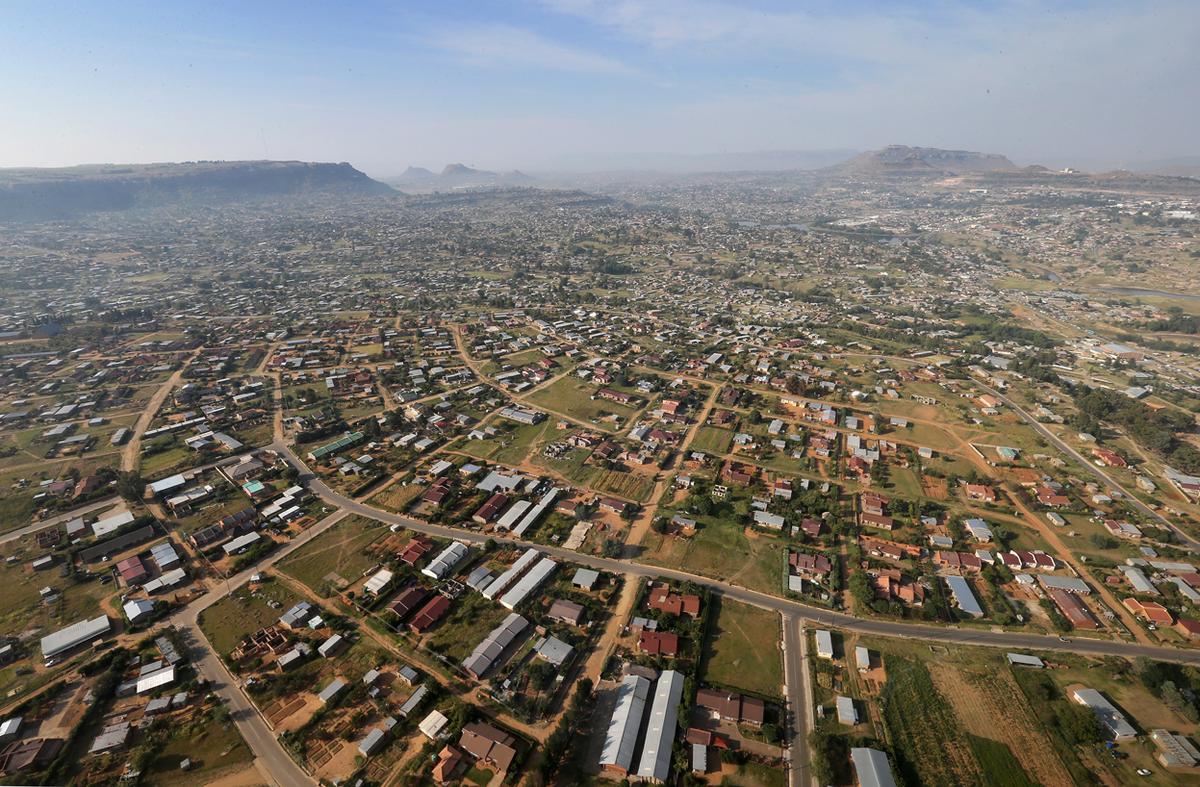 |
| Lesotho |
LESOTHO faces a
food security respite this year due to a marked upsurge in both the area
planted and yields for maize, sorghum and wheat, a Bureau of Statistics
(BOS) report has revealed.
In its Crop
Forecasting Report for the 2016/2017 season, which was released this
week, BOS expects yields for maize, sorghum and wheat to be 1.15 metric
tonnes (mt)/hectare (ha), 0.61 mt/ha and 0.83mt/ha respectively.
The yields are
double last year's harvests which were markedly reduced by the El
Nino-induced drought of the 2015/16 cropping season. The drought
prompted then premier Pakalitha Mosisili to declare a state of emergency
and asking development partners to help combat the situation.
El Niño is a periodic climatic phenomenon characterised by inadequate rain in some parts of the world and floods in others.
BOS is a department
under the Ministry of Development Planning mandated with providing
national economic and social statistics for purposes of planning and
research.
The statistics are
also meant to inform policymakers and the private sector about the
expected crop-production to make timely preparations in the event of
food shortages.
The report mainly focused on the production of three major crops, namely maize, sorghum and wheat.
It also provided
estimates on the area planted, yield per hectare, total availability and
utilisation of cereals for each of the crops.
The findings of the
2016/2017 Crop Forecasting Survey - which was undertaken from 12 to 30
April 2017 - were announced on Tuesday in Maseru. In attendance during
the event were various stakeholders such as the Ministry of Agriculture
and Food Security, Food and Agricultural Organisation (FAO Lesotho),
Central Bank of Lesotho and Catholic Relief Services among others.
According to the
report, maize production was forecast to increase to 200 143 mt from 19
182 mt last year, an increase of more than 100 percent.
"The national
average yield rate for maize has increased from 0.42 mt/ha to 1.15mt/ha.
This represents an increase of 63.4 percent," reads the report.
The area planted
for maize increased from 73 506ha in the previous year to 174 500ha,
which is a 137.4 percent increase. This translates to a farming
households' surplus of 184 185mt.
The sorghum harvest is forecast to increase by 233.2 percent to 28 191mt from the 1.159mt of the previous agricultural year.
The area planted
for sorghum, 46 591ha, was a 347.1 percent increase compared to previous
year's 10 421ha, added the report, with the area the crop was planted
the most being Maseru with 8 616ha followed by Leribe with 6.910ha.
The forecast
sorghum yield of 0.61mt/ha is an increase of 134.6 percent from last
year's 0.26mt/ha. The expected sorghum surplus is 21 773mt.
The production of wheat is forecast to increase by 128.6 percent to 10 028mt from 4 386 of the previous year.
The forecast wheat yield of 0.83mt/ha, is an increase of 207.4 percent from last year's 0.27mt/ha.
The report stressed
that the forecasting estimates were valid until the actual harvesting
estimates were released, which is normally in November.
In his remarks
during the ceremony, the Development Planning Ministry Principal
Secretary, Majakathata Mokoena-Thakhisi, said the expected good harvests
were worth celebrating given the drought of last year.
"We have done absolutely and magnificently well. This harvest is not just good, but magnificently," he said.
"So, the hunger that we had last year will be just a matter of history this year."Mr Mokoena-Thakhisi
attributed the expected good harvest to the above normal rainfall and
the limited incidents of diseases and pests like the army worm.
"You will note that
the yield rates increased in the 2016/2017 agricultural year compared
to the previous one. The general increase is mainly due to the good
rains at the time of soil preparations and planting, especially in the
lowlands. The crops were also not affected by early frost and diseases."
He said the
expected surplus necessitated the construction of storage facilities so
that surplus grains can be kept for future use when there is no such
abundance.
On behalf of the
Ministry of Agriculture, Mojalefa Mohapi, indicated that the ministry
poured in M120 million for various interventions to increase the
harvest.
These interventions
included a 50 percent subsidy programme for seeds, fertilisers and
pesticides costs for farmers. Other subsidies were on soil preparation,
as well as a share cropping scheme which covered a total of 17 000ha for
both summer and winter cropping.
For its part, FAO Lesotho subsidised the cost of maize, beans, peas, and basel fertilisers and grazing vetch for farmers.









No comments:
Post a Comment